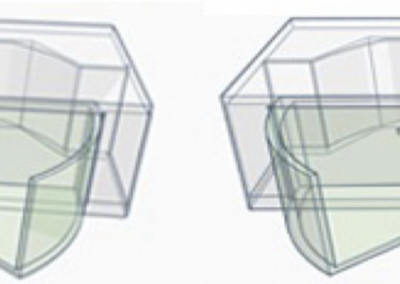Pipette Finding CNN
Mercedes Gonzales and colleagues from the Precison Bio Systems Lab at Georgia Tech developed a convolutional neural network that assesses pipette positioning before a patch clamp is begun to minimize patch clamping errors in electrophysiology experiments. This is extremely useful in patch clamp experiments, which are used to examine individual neuron behavior such as individual current and voltage changes, providing information on neuronal communication and interactions. Patch clamping requires manual placement of a 1-2μm tip onto a 10μm cell membrane, to create a seal between the pipette and neuronal membrane, which is why it is so time consuming and there is so much room for error in the pipette placement stage of these experiments. For this reason, this application is extremely useful in ensuring accurate and timely placement of the pipette prior to the patch clamp.
The creation of the pipette finding CNN involved training using image datasets containing images of pipettes, patch clamp setups, and brain slices. Processing and network training of the 300 test images used MATLAB, and patch clamp experiments used both MATLAB and LabVIEW programs. Furthermore, the preexisting neural network model ResNet101 was used for the basis of the CNN, which has been used successfully numerous times in previous work. Pipette location is assessed by the CNN in (x, y, z) coordinates to ensure accuracy compared to the images in the dataset.
This technique significantly lowers the 3D positioning error in pipette detection that was much higher in previous methods for pipette detection. The pipette detection success rate increased to 100% using the Pipette Finding CNN compared to 66% using the previous cross-correlation method. Overall, the Pipette Finding CNN is an extremely useful and reliable method for detecting pipette positioning and making patch clamping procedures less time consuming and more accurate.
This research tool was created by your colleagues. Please acknowledge the Principal Investigator, cite the article in which the tool was described, and include an RRID in the Materials and Methods of your future publications. RRID: SCR_024992
Special thanks to Abby St Jean, a neuroscience undergraduate at American University, for providing this project summary.

Access the code from GitHub!
Check out the repository on GitHub.
Read more about it!
Check out projects similar to this!






